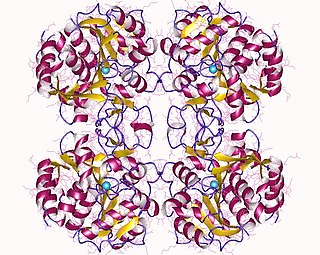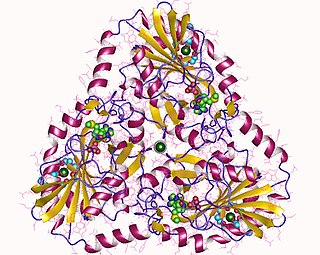| N-methyl nucleosidase | |||||||||
|---|---|---|---|---|---|---|---|---|---|
| Identifiers | |||||||||
| EC no. | 3.2.2.25 | ||||||||
| Databases | |||||||||
| IntEnz | IntEnz view | ||||||||
| BRENDA | BRENDA entry | ||||||||
| ExPASy | NiceZyme view | ||||||||
| KEGG | KEGG entry | ||||||||
| MetaCyc | metabolic pathway | ||||||||
| PRIAM | profile | ||||||||
| PDB structures | RCSB PDB PDBe PDBsum | ||||||||
| |||||||||
In enzymology, a N-methyl nucleosidase (EC 3.2.2.25) is an enzyme that catalyzes the chemical reaction
- 7-methylxanthosine + H2O 7-methylxanthine + D-ribose
Thus, the two substrates of this enzyme are 7-methylxanthosine and H2O, whereas its two products are 7-methylxanthine and D-ribose.
This enzyme belongs to the family of hydrolases, specifically those glycosylases that hydrolyse N-glycosyl compounds. The systematic name of this enzyme class is 7-methylxanthosine ribohydrolase. Other names in common use include 7-methylxanthosine nucleosidase, N-MeNase, N-methyl nucleoside hydrolase, and methylpurine nucleosidase.




